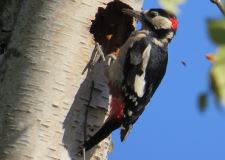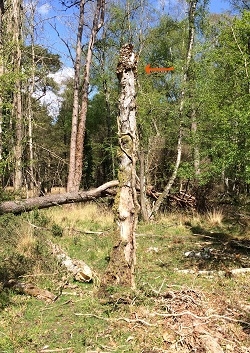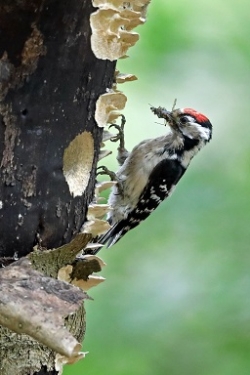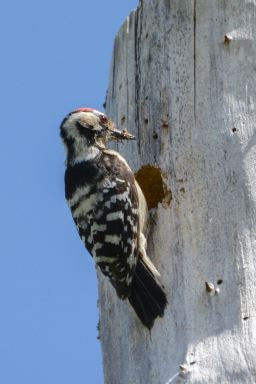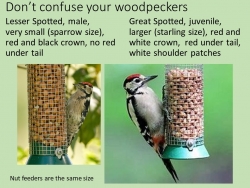Here are some tips for finding and monitoring woodpecker nests, especially Lesser Spots based on the experiences of our volunteers.
Go to an area where you saw or heard LSW earlier in the year. Spend time in the area and:
- you may just see a Lesser Spot at a nest excavation, fantastic, but you will be very lucky.
- you are more likely to hear the bird first, a short call. – ‘kee-kee’; try to locate the bird and watch where it goes. Then explore the area to find the nest tree.
- keep listening out for tapping, this will be the male or female excavating, you may not see the bird
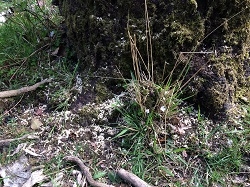 LSW wood chips at base of this nest tree, note how small they are, the size of a grain of rice.as it may be inside the cavity, look at the base of the tree for wood chips, see photos.
LSW wood chips at base of this nest tree, note how small they are, the size of a grain of rice.as it may be inside the cavity, look at the base of the tree for wood chips, see photos. - even if you do not see any birds, look at the base of all suitable trees, for wood chips. Lesser Spots only nest in dead trees or dead branches on living trees. Birch, Alder, Willow, Poplar and Ash are favourite trees.
- Wood chips from Lesser Spots are small, the size of a grain of rice, see photo. Chips from Great Spots
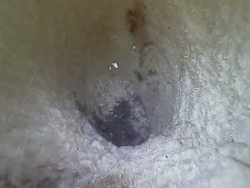 The Lesser Spot nest cavity in the Birch tree ready for eggs to be laid and Green Woodpeckers are larger. Look up at the tree for the nest hole.
The Lesser Spot nest cavity in the Birch tree ready for eggs to be laid and Green Woodpeckers are larger. Look up at the tree for the nest hole. - The Lesser Spot nest hole is small, about 30mm diameter, for comparison a Great Spot nest hole is 50mm and Green Woodpecker, 70mm. [Lesser Spot just over an inch, Great Spot about 2 inches, Green nearly 3 inches in diameter].
- If you are not sure if the excavation is active, clear all the chips away from a small area and see there are new chips on your next visit. If there are the nest hole will be in the tree and you should be able to see it.
- Keep observing the nest over the next few weeks to monitor progress,
- Woodpecker Network has access to 5 nest inspection cameras. If appropriate a quick check with the camera will show if the nest cavity is complete and if there are any eggs.
Please keep at a safe distance so as not to disturb the birds. In our experience Lesser Spots are not disturbed by quiet observers at a discrete distance. But do not stay near the nest taking photographs. Lesser Spots often choose to nest close to footpaths or other busy areas.
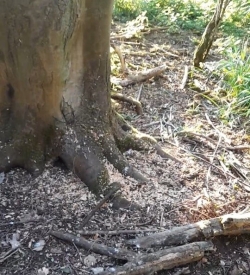 By way of contrast here is a Green Woodpecker nest found by Mat Shore, look at the quantity and size of the wood chips!! Note also the size of the hole and that the excavation is in a living tree.
By way of contrast here is a Green Woodpecker nest found by Mat Shore, look at the quantity and size of the wood chips!! Note also the size of the hole and that the excavation is in a living tree.
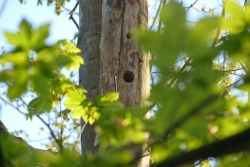
All records of Green Woodpecker nests are also very welcome as few are monitored.
Please make a note of all your observations and keep Ken and Linda at Woodpecker Network updated.
